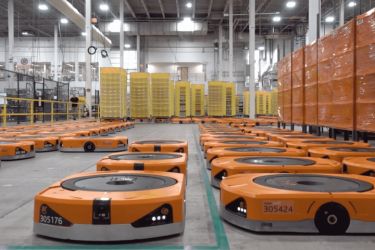If your warehouse quality control practices are on point, waste, customer dissatisfaction, and product damage should be low. Even now, you can identify areas where operations need to improve. But what do excellent quality control practices in warehouses look like? Please identify an area in your warehouse where you believe you have effectively implemented quality control best practices. We have some ideas to help. Check it out!
First Things First: What is Warehouse Quality Control?

Warehouse quality control is an activity. It includes all your steps to ensure products are manufactured without error or material waste. Quality control also refers to setting and meeting standards for storing materials, training employees, and maintaining machines. Moreover, quality control is not something that is only done by management. Instead, it involves a variety of employees in a myriad of functions.
For example, the employee who checks in delivered goods and compares them to a purchase order performs a quality control step. They ensure that you have the correct amount of raw materials. The employee unpacks the order, checks for defective or damaged items, and then performs another step. As you can see, you already have some warehouse quality control protocols in place. Now, the challenge is to streamline the process.
Streamlining Quality Control Processes
Let's summarize some common areas of warehouse quality control that you have implemented to some extent.
- Incoming products. Employees verify the quantities and quality of incoming products and materials.
- Outgoing products. Employees confirm shipments to customers before they are dispatched from the warehouse. They might perform quality control or double-check the count of an item.
- Manufacturing processes. Supervisory employees are responsible for inventory control, packaging standards, and the careful handling of products.
By the way, there is a difference between quality control and assurance. Control applies to your warehouse's operations, while assurance focuses on product quality. That said, there is some overlap.
Developing a Comprehensive Set of Quality Control Procedures
You have identified several ways staff members are already contributing to quality control. Now is the time to collate the information under appropriate headings. Examples include an ongoing assessment of already implemented quality control processes. What looks great today may be obsolete tomorrow if you decide to integrate technology.
Formulate goals for quality standards. You have set standards and notice that you are not meeting them. Which step-by-step goals could help you achieve the standards? Break down these steps and identify the stakeholders involved in each one. Depending on the size of your warehouse operation, doing so may involve one or more employee teams per step.
Finally, work with your employees to develop and maintain the standards. In some cases, this may involve cross-training; in other cases, you may add incentives to encourage adherence to quality control procedures.
Regardless of how your quality control procedures are structured, please put them in writing and make them readily accessible to employees. Integrate them in your training of new hires. Please post them in common areas to remind employees of the standards the company has developed. Consider holding weekly or monthly employee meetings to discuss the business's protocol adherence and progress in effectiveness.
Technology is an Indispensable Tool to Put Quality Control Procedures in Effect

Amazon warehouse automation is a fantastic example of technology and people working together. You need technology to implement warehouse quality control practices that will put you on par with this competition. Start small with products such as barcode scanners, warehouse management software (WMS), and radio frequency identification (RFID) tags for tracking.
While each piece of technology may not apply to your operation, you can identify several that you are currently not utilizing. Going paperless enables software to connect the various departments, and quality control processes are not communicating effectively.
Understanding the Challenges to Quality Control Efforts
In an ideal world, implementing quality control would be straightforward. After all, you want to turn out high-quality products, achieve enhanced customer satisfaction, and commit to continuous improvement. However, several things can go wrong.
- Human error. Any process that involves employees can result in errors. Examples include misplacing a shipment, mislabeling a pallet, or picking the wrong product. Reduce mistakes by implementing quality control measures for each activity and providing adequate training for each worker.
- Warehouse problems. Even something as minor as insufficient ventilation can cause raw materials or finished products to deteriorate. Other challenges involve moisture, temperature fluctuations, and pests. These problems will make it challenging to add new technology. It may be time to review your warehouse setup and make necessary repairs or adjustments to your storage systems.
- Compliance adherence. Compliance may refer to legal requirements set forth by your municipality. It may also be related to your company's mission and vision statement. Complying with brand standards can be challenging when compiling quality control measures as a recent afterthought.
What Happens if You Do Nothing
Do not let challenges and the sheer volume of requirements deter you from determining and implementing quality control practices in warehouses and related distribution facilities. Things will worsen if you do nothing or put off the quality control measures. Customers may do business with competitors because their products pass quality assurance tests. Inventory discrepancies will cost you capital when investing in technology. The same is true for the expenses related to redoing orders, declaring product waste, or shipping additional products for incomplete orders.
Growing Warehouse Operations With Quality Control Measures

One cannot discuss warehouse operations without mentioning lean manufacturing. It is a process that increases warehouse efficiency in real-time by looking for and eliminating waste. This may be found in improper storage, fluctuating quality standards, and lax order fulfillment. However, you do not have to commit to lean manufacturing to get started on warehousing quality control.
Collaborate With Other Businesses to Meet and Exceed Your New Quality Control Measures
Do you rely on shipping companies to transport your goods to customers? You also have material providers you rely on for good-quality raw materials to manufacture your products. Build these business relationships whenever they align with your quality control protocols. For example, if you need new pallets for shipping, we can help!
Contact us today to learn about your options!
























